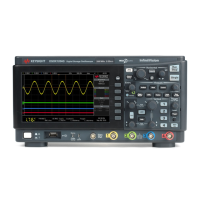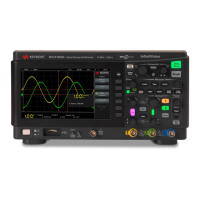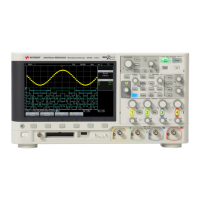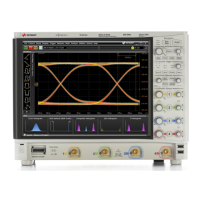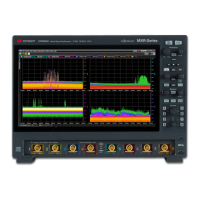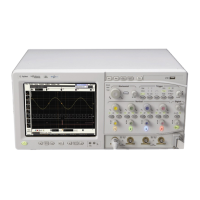Math Waveforms 5
Keysight InfiniiVision HD3-Series Oscilloscopes User's Guide 91
The source waveform can be one of the analog input channels or one of the
previous math function waveforms.
Unlike acquisition averaging, the math averaging operator can be used to average
the data on a single analog input channel or math function.
If acquisition averaging is also used, the analog input channel data is averaged
and the math function averages it again. You can use both types of averaging to
get a certain number of averages on all waveforms and an increased number of
averages on a particular waveform.
As with acquisition averaging, averages are calculated using a "decaying average"
approximation, where:
next_average = current_average + (new_data - current_average)/N
Where N starts at 1 for the first acquisition and increments for each following
acquisition until it reaches the selected number of averages, where it holds.
Select Reset Count to clear the number of waveforms evaluated.
See Also •
"Averaging Acquisition Mode" on page 169
Band Pass Filter
The band-pass filter function applies the filter to the selected source waveform
and displays the result in the math waveform.
Use the Center field to enter the center frequency of the band-pass filter.
Use the Width field to enter the frequency width of the band-pass filter. This
specifies the filter's -3 dB cutoff frequencies (center frequency minus half the
width and center frequency plus half the width).
Envelope
The resulting math waveform shows the amplitude envelope for an amplitude
modulated (AM) input signal.
This function uses a Hilbert transform to get the real (in-phase, I) and imaginary
(quadrature, Q) parts of the input signal and then performs a square root of the
sum of the real and imaginary parts to get the demodulated amplitude envelope
waveform.
The ratio of the input signal's Nyquist frequency and the selected -3 dB cutoff frequencies
affects how many points are available in the output, and under some circumstances, there are
no points in the output waveform.
